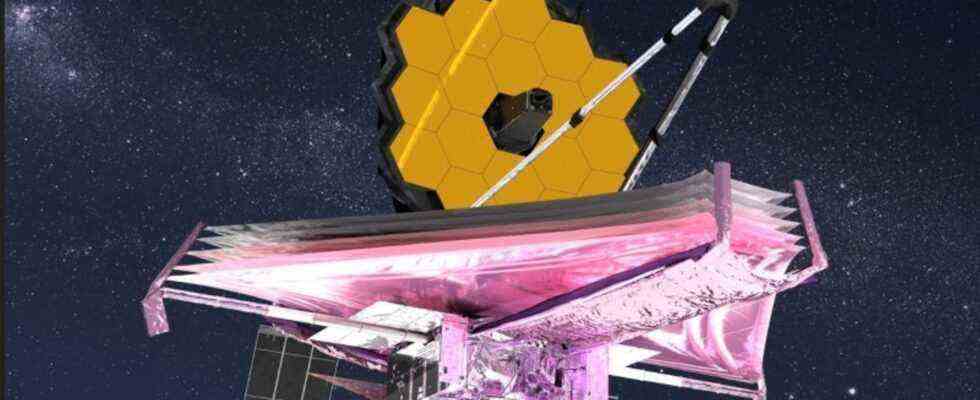space exploration
On the trail of the secrets of the Big Bang – the “James Webb” space telescope reaches its target orbit
Artist’s rendering of the James Webb Space Telescope in space showing all major elements fully deployed
© Adriana Manrique Gutierrez/NASA GSFC/CIL/DPA
The James Webb Space Telescope has arrived at the second Lagrange point a month after launch. About 1.5 million kilometers away from Earth, the telescope should provide insights into the time after the Big Bang.
According to the US space agency Nasa, the “James Webb” space telescope has reached its target orbit about a month after being launched into space. “Webb, welcome home,” said NASA CEO Bill Nelson. On Monday (local time) the telescope started the engines for almost five minutes at the end of the last course correction and reached the so-called second Lagrange point (L2) at a distance of almost 1.5 million kilometers from Earth. The telescope, built jointly by space agencies in Europe, the USA and Canada, is intended to explore the oldest galaxies in the universe.
“James Webb” is supposed to provide insights into the time after the Big Bang
“James Webb” was launched on December 25 aboard an Ariane launch vehicle from the European space station in Kourou in French Guiana. During the flight, which lasted around four weeks, the sun protection of the telescope was opened and the mirror systems were extended, among other things. Scientists hope that the recordings will provide insights into the time after the Big Bang around 13.8 billion years ago.
The first data and images from the telescope are not expected until summer at the earliest. “We’re one step closer to unlocking the mysteries of the universe,” Nelson said. He can’t wait to see Webb’s first new views of the universe this summer. According to the operator, the “James Webb” telescope was developed for around 30 years and cost around 10 billion dollars (8.8 billion euros). It follows the Hubble telescope, which has been in use for more than 30 years.

